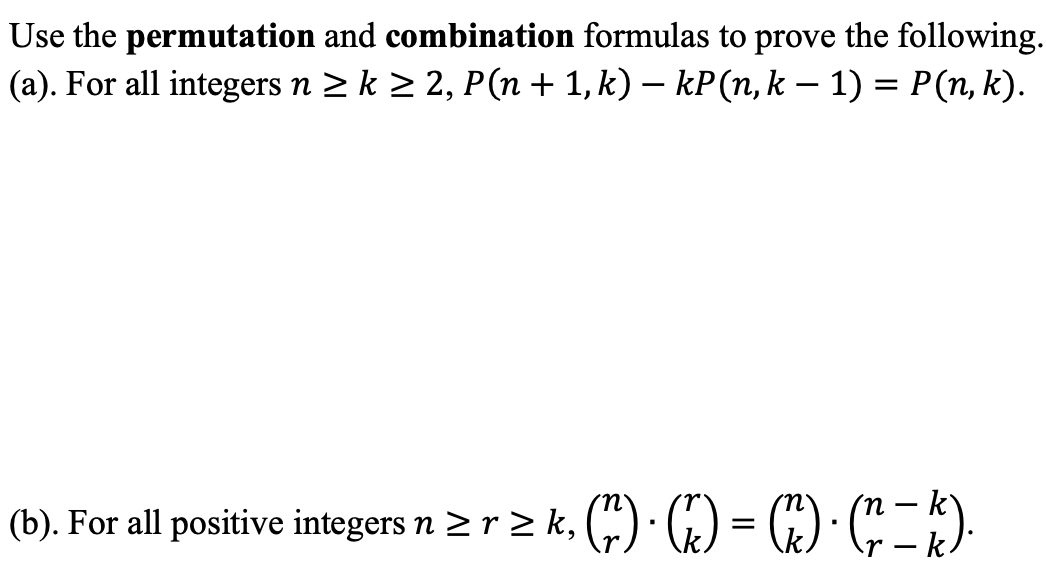Use the permutation and combination formulas to prove the following (a). For all integers n > k > 2, P(n + 1, k) – kP(n, k – 1) = P(n, k). (b). For all positive integers n 2 r 2 k, (") ·() = 4)· ().
Use the permutation and combination formulas to prove the following (a). For all integers n > k > 2, P(n + 1, k) – kP(n, k – 1) = P(n, k). (b). For all positive integers n 2 r 2 k, (") ·() = 4)· ().
Algebra & Trigonometry with Analytic Geometry
13th Edition
ISBN:9781133382119
Author:Swokowski
Publisher:Swokowski
Chapter10: Sequences, Series, And Probability
Section: Chapter Questions
Problem 49RE
Related questions
Question
PLEASE SOMEONE DO THIS ASAP ITS AN EMERGENCY AND SHOW ALL THE WORK STEP BY STEP PLEASE

Transcribed Image Text:Use the permutation and combination formulas to prove the following.
(a). For all integers n 2 k 2 2, P(n + 1, k) – kP(n, k – 1) = P(n, k).
%3D
-k`
(b). For all positive integers n 2 r 2 k, („) · G) = #) · (").
-k/
Expert Solution
This question has been solved!
Explore an expertly crafted, step-by-step solution for a thorough understanding of key concepts.
Step by step
Solved in 2 steps with 1 images

Knowledge Booster
Learn more about
Need a deep-dive on the concept behind this application? Look no further. Learn more about this topic, advanced-math and related others by exploring similar questions and additional content below.Recommended textbooks for you

Algebra & Trigonometry with Analytic Geometry
Algebra
ISBN:
9781133382119
Author:
Swokowski
Publisher:
Cengage

Linear Algebra: A Modern Introduction
Algebra
ISBN:
9781285463247
Author:
David Poole
Publisher:
Cengage Learning


Algebra & Trigonometry with Analytic Geometry
Algebra
ISBN:
9781133382119
Author:
Swokowski
Publisher:
Cengage

Linear Algebra: A Modern Introduction
Algebra
ISBN:
9781285463247
Author:
David Poole
Publisher:
Cengage Learning
